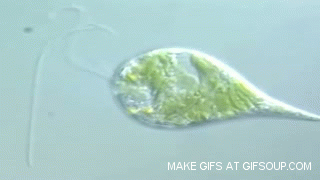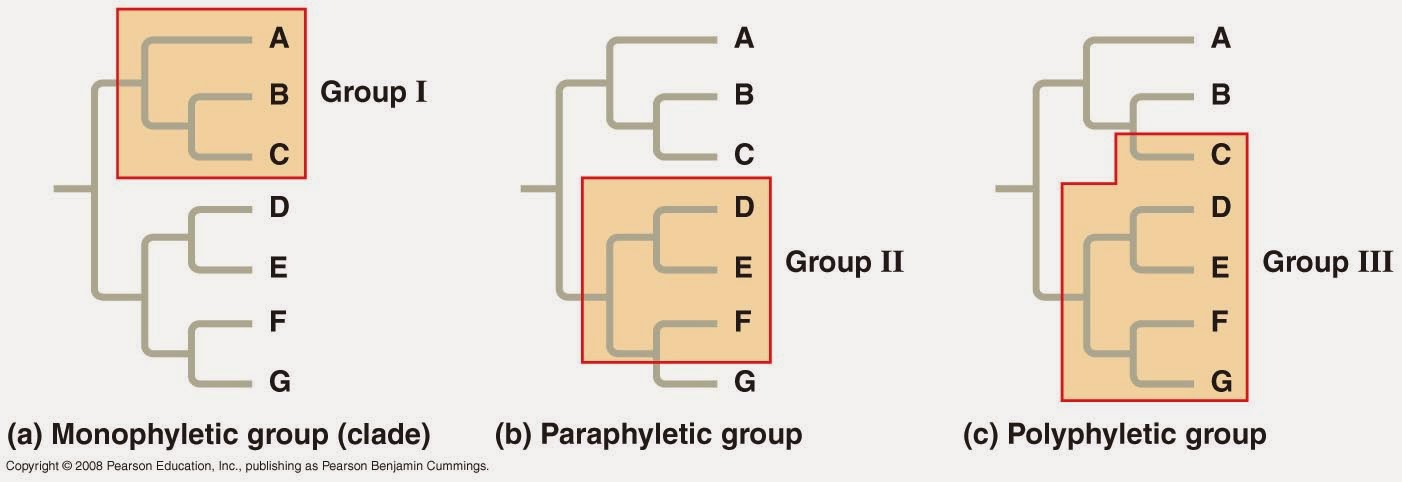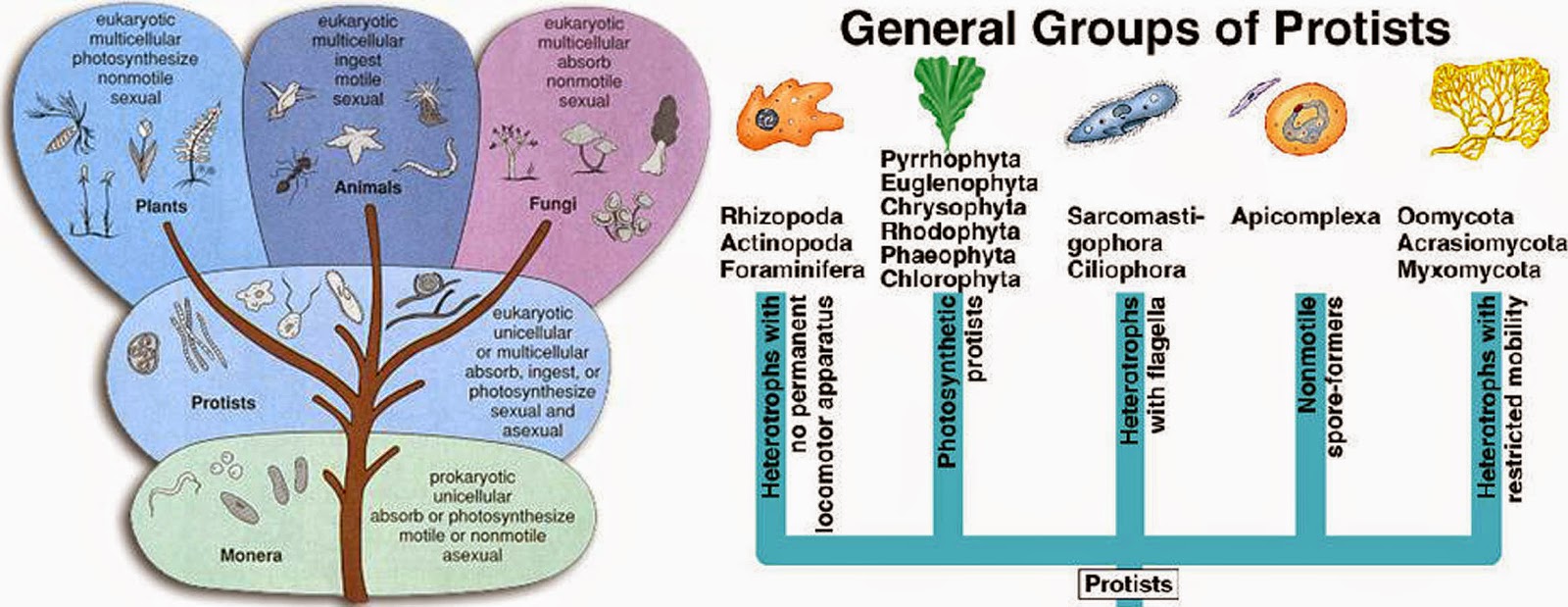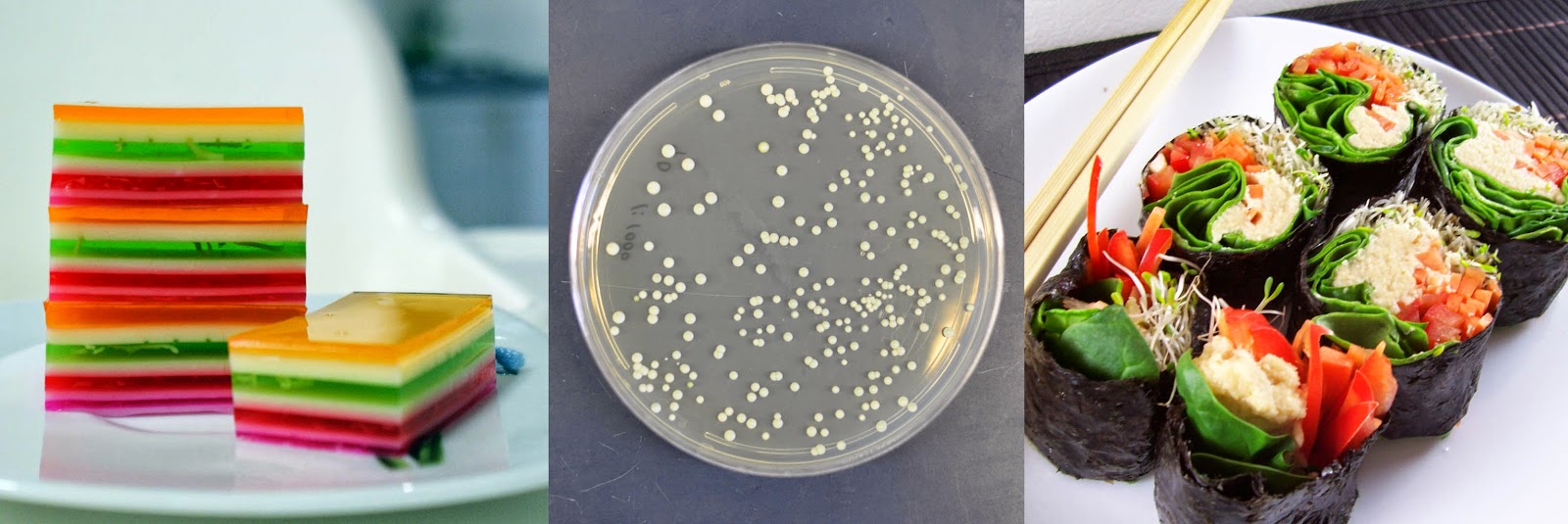Biology concepts – Protista, taxonomy, phylum, kingdom, monophyletic, paraphyletic, cladistics, algae, diatom, dinoflagellate
The best example of the inanity of classification is Kingdom Protista. The word means, “the very first,” probably because it is supposed that these were the first eukaryotes. How do we define the organisms of this Kingdom? The best we can manage is to say that they are the eukaryotes that aren't animals, plants, or fungi. Really, is that the best we can do?
In a perfect system, all the organisms of one kingdom would be descended from a single common ancestor (be monophyletic, mono = one, and phulon = tribe). But it don’t work like that. And this is where Kingdom Protista serves as a good example.
There are protists that look a lot like animals, those that resemble plants, and those that share features of fungi. No way did they all come from a single ancestor. Protista is a paraphyletic(para = near) kingdom, the group may exclude a member with a common ancestor. As such, the protists are a catch-all, those that don’t fit in some other kingdom. Protists are like pornography – hard to define, but you know it when you see it.
You might do it by common ancestor; let their genes do the talking. We are learning more and more about who begot who – this is the study of cladistics. But if you break down protists into their clades – they don’t seem to make sense. Organisms that look or act similar might be in different clades, with wildly different organisms linked close together.
Alternatively, you might divide them up based on the characteristics, as Linneaus did - the animal-like protists in one phylum, the plant-like protozoans in another. But this may separate genetically related organisms into very different phyla. Same problem. How about by the way they get around? Some use flagella-like undulipodia, some use undulipodia called cilia, some use cytoplasmic crawling called pseudopodia, and others are immotile. Again, disparate organisms may be lumped together just based on their preferred mode of travel.
The idea of the "phylum" is to place the organisms in categories so that they are “more related to each other than they are to any other group.” Wow, that sounds scientific. Related based on what? We just discussed motility, genetics, and physical characteristics or behaviors.
So we guess. And then we change things as new information becomes available. The work never ends, and the students never get to just memorize the categories.
As of today, some scientists classify protists based on a combination of the characteristics above. In the system I like best, there are 15 phyla, and we can roughly divide them as we show below. But there are six different phyla just for the protists that perform photosynthesis! The reason I like this system best -it roughly mimics the way they use undulipodia. And this is what we’re interested in today.
Kingdom Protista contains the organisms that seem to have made the most obvious uses of undulipodia. Eukaryotic flagella and cilia abound, some protists have both, and some have them only part of the time. There are six phylums of plant-like protists. Many have flagella, none that I could find have cilia. Here are some examples:
Phylum Euglenophyta– This phylum includes the Euglena gracilis organism shown in the animation at the beginning of the post. These protists also have two flagella, but one of them is reduced and doesn’t stick out. They have an eyespot, perhaps the genesis of our own eye. The eyespot helps them to move away from strong light sources, sources that would overheat them.
Euglena are common model organisms, on this world and in (near) space. They traveled on the parabolic flights to have their flagellar motions studied in zero gravity. The 2010 publication that resulted from the experiments showed that the process of beating is regulated and physiologic, as the change from hypergravity to microgravity stopped the flagellum from moving. The opposite change in gravity reoriented the cells and they started swimming to the bottom of their tank again.
The remaining phyla of plant-like protists can be included in a supergroup called the Chromista(colored organisms). In terms of their undulipodia, the chromists tendto have two flagella, one on each end. The forward flagellum is usually longer and has lateral growths called mastigonemes. The best description for this type of flagellum is that it looks like Christmas tinsel. The back flagellum is shorter and smooth.
Green algae are the ones we recognize; they belong to the Chlorophyta phylum. These are the ancestors of the land plants, and some have flagella in all stages, while others only have flagellated gametes. We will see soon how some land plants still have flagellated gametes.
Brown algae belong to the Phaeophyta phylum. They are exceptional amongst the protists because every organism in this phylum is multicellular. No brown algae live as individual cells. Kelp is an example of brown algae. Kelp forests are multicellular example of brown algae thalli, growing to 40-60 m (130-200 ft) in height! Kelp forests are some of the most productive ecosystems on earth.
The gametes of the brown algae are flagellated like in most of the other chromists. A 2014 study has started to look at the flagella of the chromists, using brown algae as the model organism. The study found that the flagella have functions in motility, signal transduction, and even metabolic activities. The two different types of flagella had common proteins and proteins specific to each form, for a total of 495 different proteins associated with flagellar function and structure. For instance, only the posterior flagellum has a protein that senses blue light, and may be used for steering the organism.
If you’ve eaten Japanese sushi rolls, then you’ve eaten red algae in the nori that the rice and fish are wrapped in. Nori is made from several species of red algae of the genus Porphyra. Not a sushi fan? How about ice cream? Carageenans that make ice cream smooth also come from red algae.
Ice cream is reason enough to love the red algae, but there’s more. A 2014 study indicates that one compound found in the Porphyra is a strong antibiotic. Studies of 1,8-dihydroxy-anthraquinone from this red algae genus can disrupt the cell wall of Staphylococcus aureus. This is hugely important, since many strains of S. aureus (like MRSA and VRSA) are now resistant to most existing antibiotics.
Rhodophyta algae are red because although they use some chlorophylls for photosynthesis, they also use phycoerythrins and phycocyanins. Interestingly, these are the same pigments that are present in the cyanobacteria. This suggests that there is an ancestral link. The link is supported by one other factoid. Both cyanobacteria and red algae lack undulipodia!
Whatever it is, the system seems to work. A 2014 study found that fertilization success was dependent on male organism biomass, but neared 100% when there were relatively few male gametes present. This was hypothesized to be possible because low tides in the tidal pools where the organisms live greatly increase the chances of male/female interaction and fertilization. Seaweed takes advantage of the moon’s effect on the tides to ensure reproductive success – who needs flagella!?
So far we have met protists that use flagella at some point in their life cycle (except for the red algae). Notice that none of them have used cilia. Next week, how about the animal-like protists? I bet there are some exceptions there as well.
For more information or classroom activities, see:
Kingdom Protista –
Euglena –
Red tide –
Pyrrophyta –
Kelp –
























